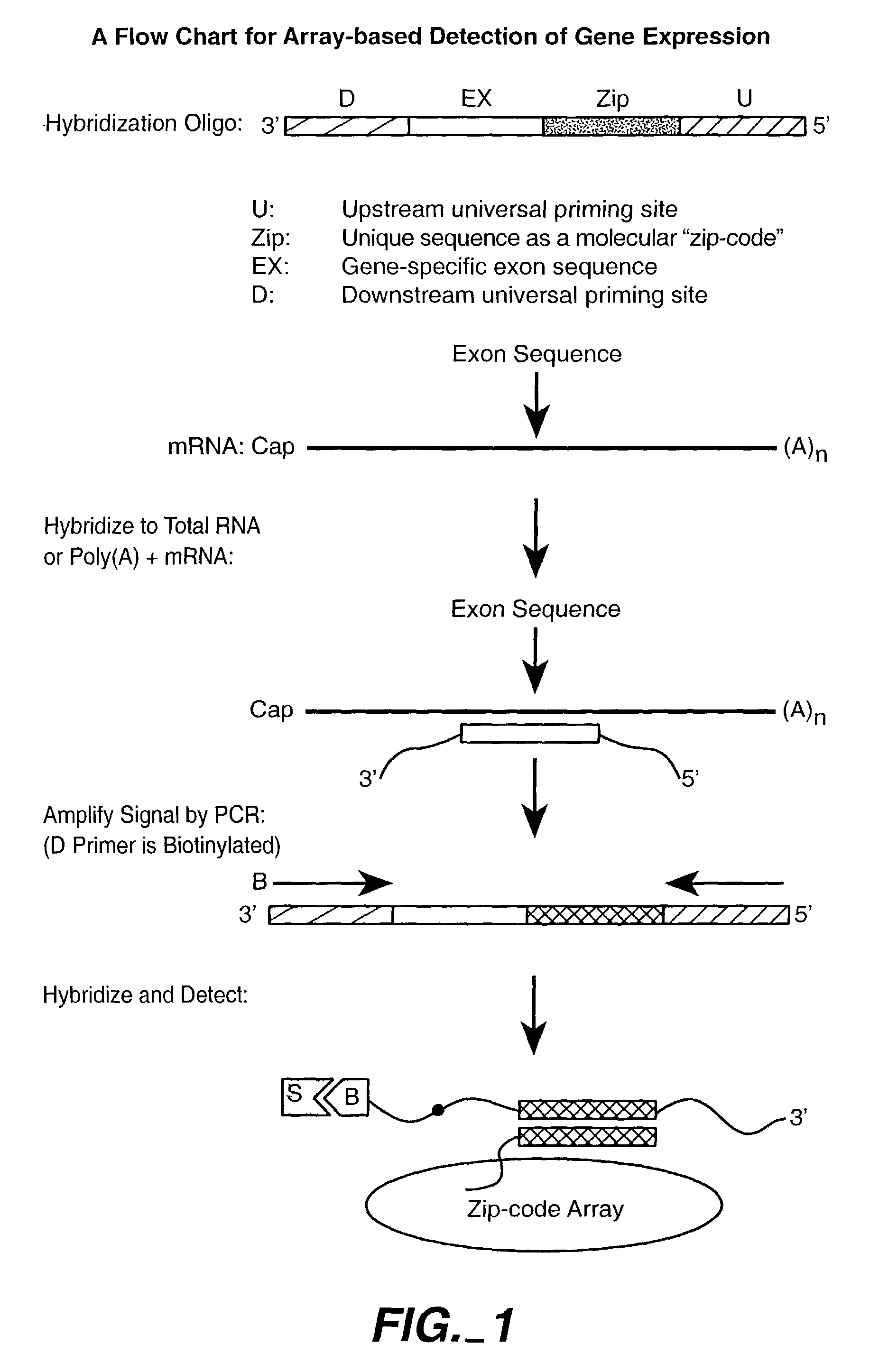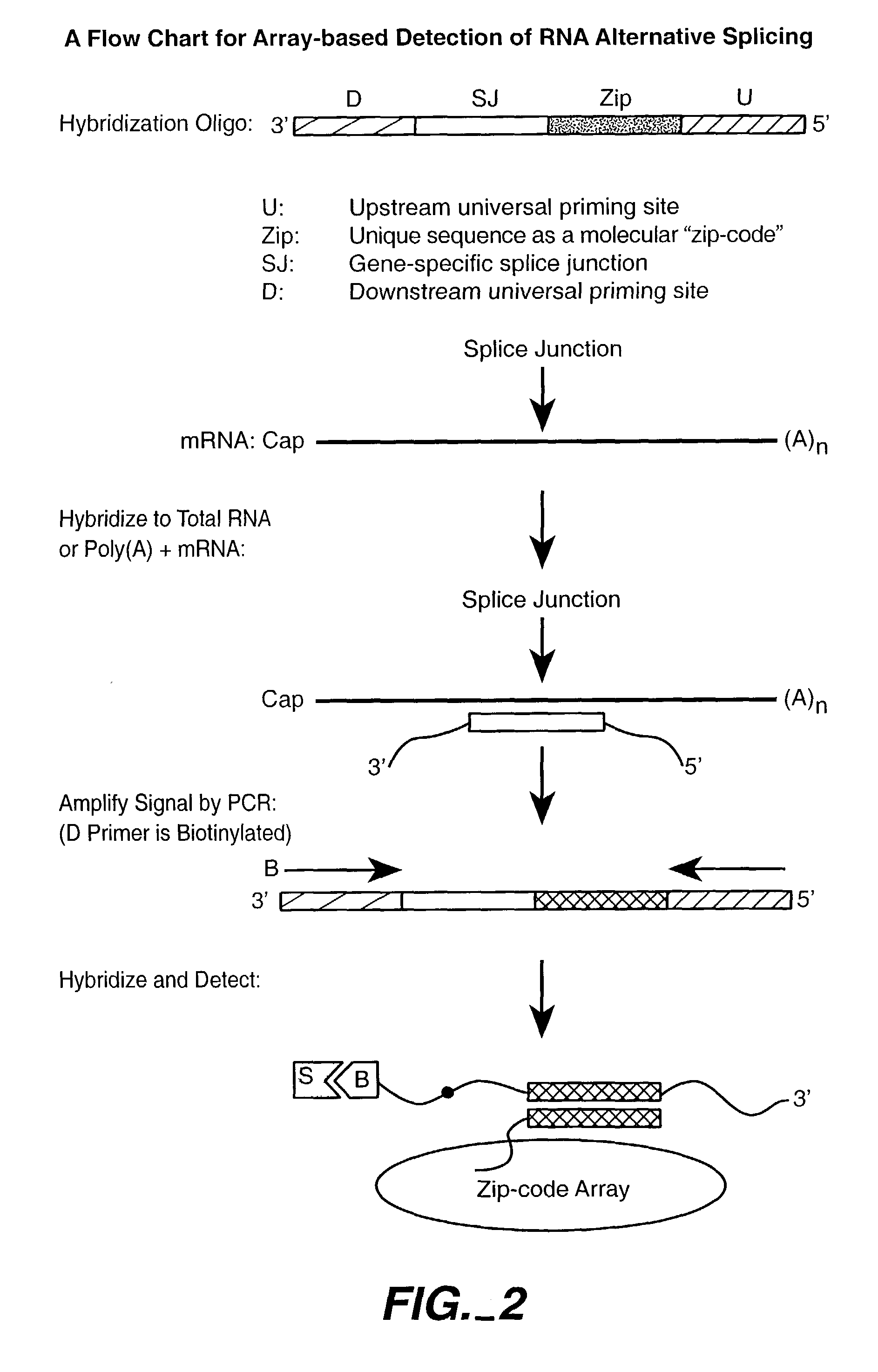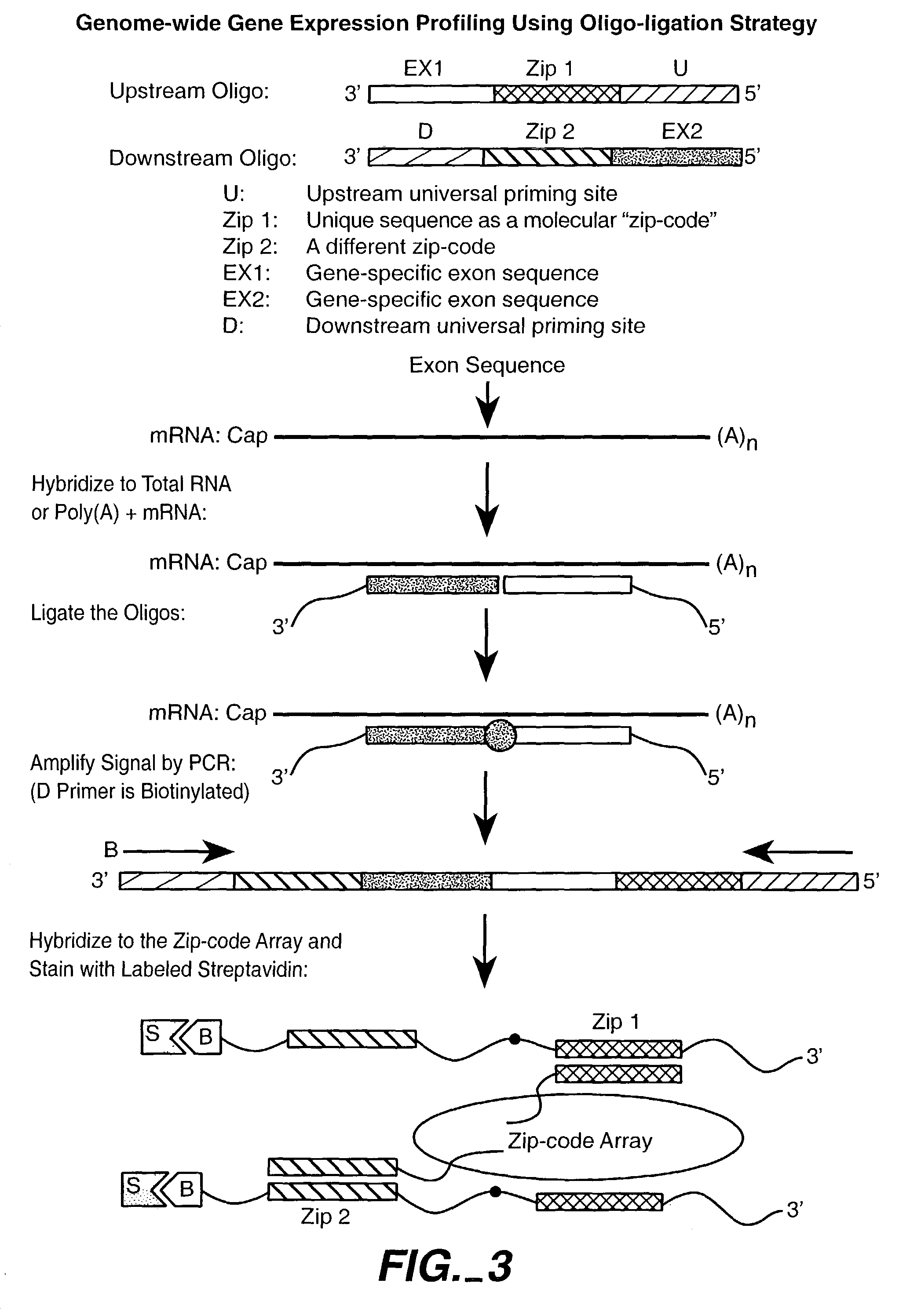Nucleic acid detection methods using universal priming
a technology of nucleic acid and priming, applied in the field of nucleic acid detection methods using universal priming, can solve the problems of low scale, labor intensive, and inconvenient operation, and achieve the effects of low cost, low labor intensity, and high labor intensity
- Summary
- Abstract
- Description
- Claims
- Application Information
AI Technical Summary
Benefits of technology
Problems solved by technology
Method used
Image
Examples
example 1
Experimental Strategy
[0279]In order to detect mRNA isoforms as well as closely related transcripts for profiling both gene expression and alternative splicing, an assay was developed using an addressable approach (FIG. 12a). Using a 5′ alternative splicing scenario as an example, two DNA oligonucleotides were designed for the two competing 5′ splice sites and one for the common 3′ splice site (FIG. 12b). The 5′ splice site oligonucleotides are also linked to unique “address” sequences. These addresses allow sorting of individual splicing events on a universal address array. Both 5′ and 3′ oligonucleotides are also flanked by common PCR primer binding sites (T3 at one end and T7 at the other). The assay consists of five steps (FIG. 12c): (1) RNA annealing: A mix of specific oligonucleotides and biotinylated oligo-dT are hybridized to total RNA. (2) Poly (A+) selection: Polyadenylated mRNAs are selected through binding of biotinylated oligo-dT to streptavidin coated on tube wells. mRN...
example 2
Multiplex Analysis of mRNA Isoforms
[0284]To determine the detection range in in multi-plexed reactions, four poly(A)-tailed nonhuman RNAs were prepared and spiked into 1 ug of total HeLa RNA (FIG. 16a). Three of them were detectable from 104 to 106 molecules, but the detection sensitivity was much lower with the luc RNA.
[0285]To address multiplexing and reproducibility, 100 transcripts were selected for profiling gene expression and 100 isoforms from 23 genes for analysis of alternative splicing. 10 mRNA isoforms were quantified in the presence of an increasing number of other targets to determine the potential interference in the multiplex situation (FIG. 16b). The data indicate that the impact of multiplexing at the current complexity appears rather minimal as the signals from the 10 reference targets remained unaltered when assayed in the presence of up to 100 other targets.
[0286]To demonstrate the reproducibility of the assay, the expression of 100 isoforms in 5 cell lines were ...
example 3
Profiling Gene Expression and Alternative Splicing in Cancer Cells
[0287]The expression of the selected targets in a number of human cancer cell lines were examined. Using the “array of arrays” format, multiplexed RASL was conducted in triplicate with RNA samples from five cell lines and six specific genes were chosen to determine their isoform expression by RT-PCR (FIG. 17).
[0288]The p16 / 14ARF gene (CDKN2A) plays a critical role in cell cycle control. This gene encodes two proteins using two promoters (1a for p16 and 1b for p14ARF). Remarkably, the a and b exons transcribed from their promoters are spliced to the second common exon, but linked to two different reading frames in the second exon to encode the protein products. As a result, p16 and p14ARF share no sequence homology at the protein level. p16 is known to control cell cycle through the Rb pathway whereas p14ARF is involved in the p53 pathway. Both RASL and RT-PCR yielded similar expression profiles of the two isoforms in ...
PUM
| Property | Measurement | Unit |
|---|---|---|
| pH | aaaaa | aaaaa |
| pH | aaaaa | aaaaa |
| pH | aaaaa | aaaaa |
Abstract
Description
Claims
Application Information
 Login to View More
Login to View More - R&D
- Intellectual Property
- Life Sciences
- Materials
- Tech Scout
- Unparalleled Data Quality
- Higher Quality Content
- 60% Fewer Hallucinations
Browse by: Latest US Patents, China's latest patents, Technical Efficacy Thesaurus, Application Domain, Technology Topic, Popular Technical Reports.
© 2025 PatSnap. All rights reserved.Legal|Privacy policy|Modern Slavery Act Transparency Statement|Sitemap|About US| Contact US: help@patsnap.com



